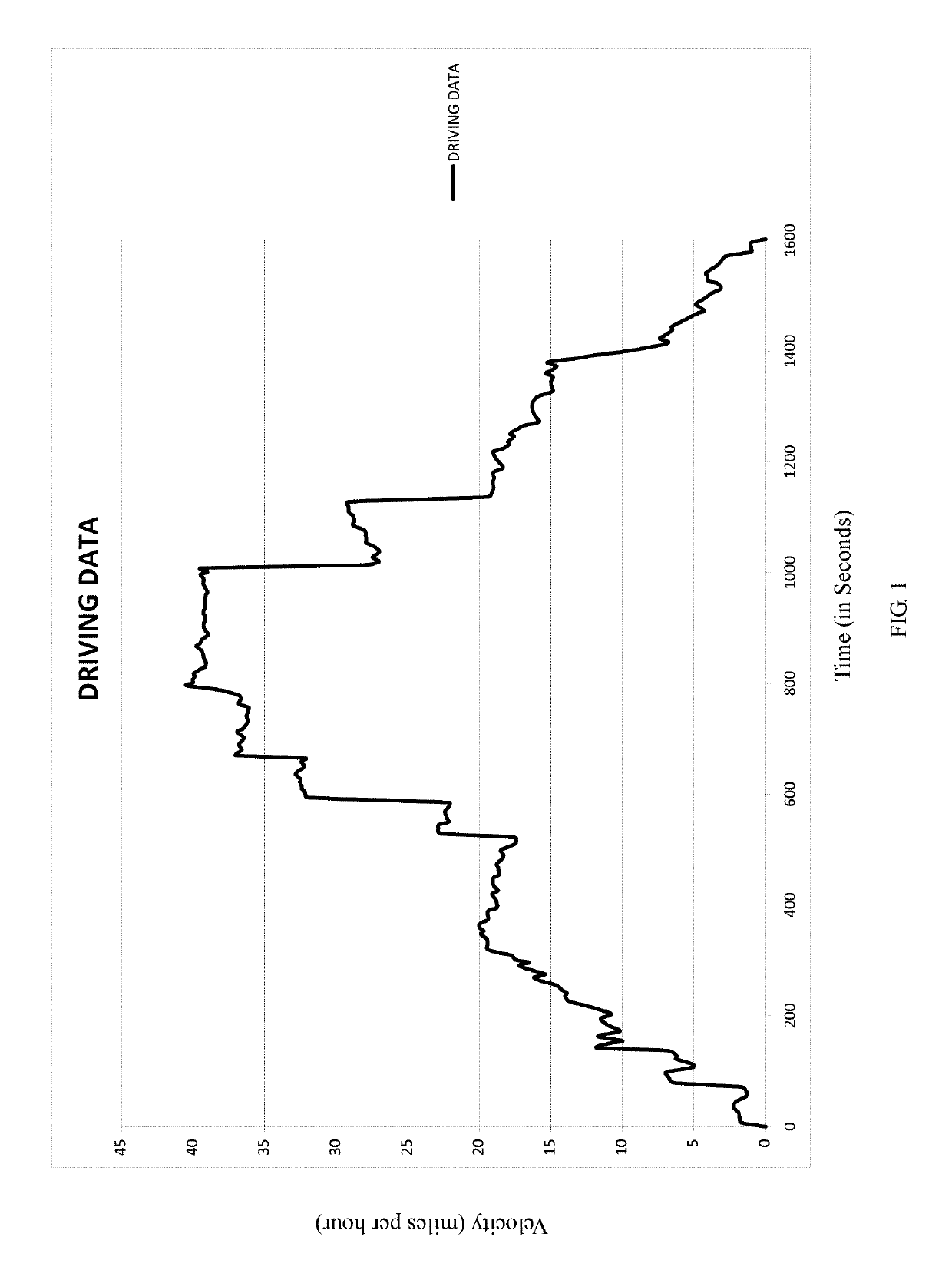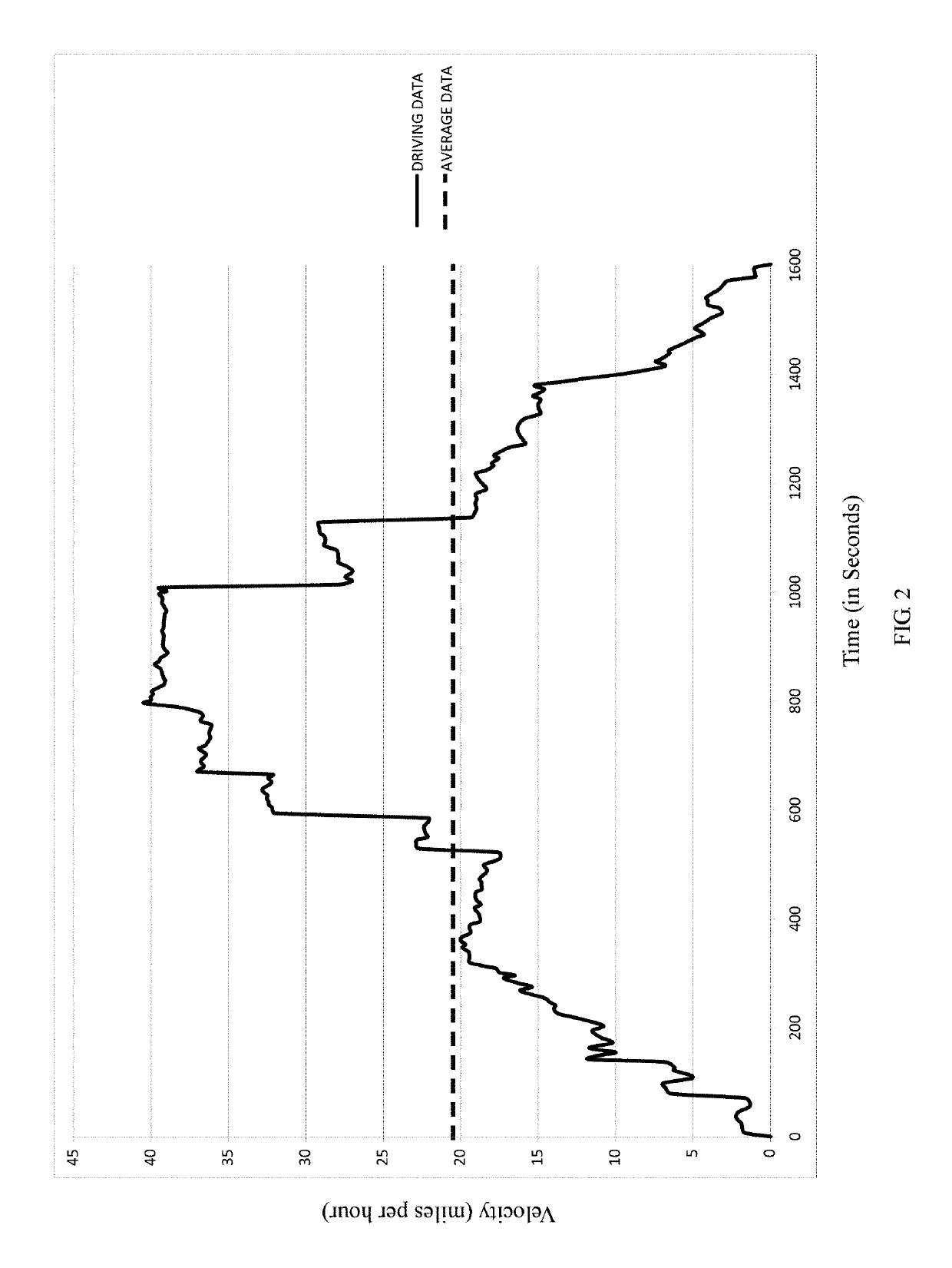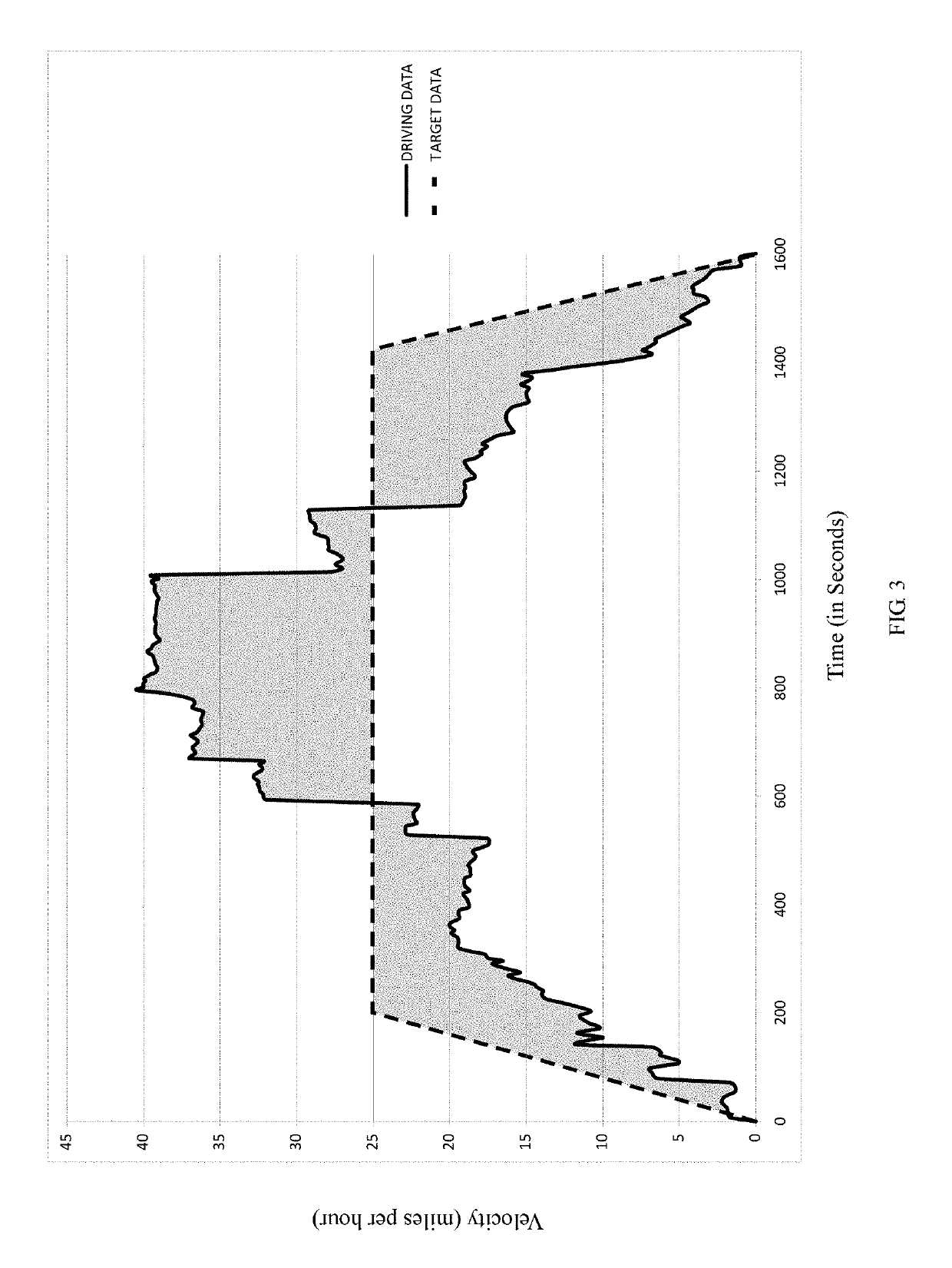Method for applying expert usage based data
- Summary
- Abstract
- Description
- Claims
- Application Information
AI Technical Summary
Problems solved by technology
Method used
Image
Examples
Example
DETAILED DESCRIPTION OF THE DRAWINGS
Prior Art Analysis of Analyzing Consumer Automobile Driving Data
[0037]The chart in FIG. 1 depicts a hypothetical automobile trip where an automobile drives at different speeds (Y-AXIS=Miles per Hour) for 1600 seconds, approximately 27 minutes, (X-AXIS=elapsed Time in Seconds). From the figure, it is seen that the automobile travels at different speeds throughout the trip.
[0038]The data in FIG. 1 is analyzed by converting it into a continuous X-Y plot. The X-Y value can be any combination of variables collected. For example, the X coordinate might be the number of seconds that have elapsed since an automobile was started. The Y value may be the average speed of operation at the time the data is collected. As illustrated, X-Axis=Seconds, and Y-Axis=Miles Per Hour.
[0039]LineLength1,2=(x1-x2)2+(y1-y2)2(Equation1)
[0040]It is possible to measure the line length of a line segment by applying the Euclidean distance formula given in Equation 1. Prior to ...
PUM
 Login to View More
Login to View More Abstract
Description
Claims
Application Information
 Login to View More
Login to View More - R&D
- Intellectual Property
- Life Sciences
- Materials
- Tech Scout
- Unparalleled Data Quality
- Higher Quality Content
- 60% Fewer Hallucinations
Browse by: Latest US Patents, China's latest patents, Technical Efficacy Thesaurus, Application Domain, Technology Topic, Popular Technical Reports.
© 2025 PatSnap. All rights reserved.Legal|Privacy policy|Modern Slavery Act Transparency Statement|Sitemap|About US| Contact US: help@patsnap.com



